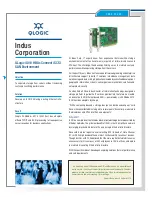
272 • ETHERNET
Network communication
Modular I/O System
ETHERNET TCP/IP
5.2.2.1 ETHERNET
ETHERNET address (MAC-ID)
Each WAGO ETHERNET fieldbus coupler is provided from the factory with a
unique and internationally unambiguous physical ETHERNET address, also
referred to as MAC-ID (Media Access Control Identity). This can be used by
the network operating system for addressing on a hardware level.
The address has a fixed length of 6 Bytes (48 Bit) and contains the address
type, the manufacturer’s ID, and the serial number.
Examples for the MAC-ID of a WAGO ETHERNET fieldbus coupler (hexa-
decimal): 00
H-
30
H-
DE
H-
00
H-
00
H-
01
H.
ETHERNET does not allow addressing of different networks.
If an ETHERNET network is to be connected to other networks, higher-
ranking protocols have to be used.
Note
If you wish to connect one or more data networks, routers have to be used.
ETHERNET Packet
The datagrams exchanged on the transmission medium are called
“ETHERNET packets” or just “packets”. Transmission is connectionless; i.e.
the sender does not receive any feedback from the receiver. The data used is
packed in an address information frame. The following figure shows the
structure of such a packet.
Preamble
ETHERNET-
Header
ETHERNET_Data
Check sum
8 Byte
14 Byte
46-1500 Byte
4 Byte
Fig. 5-9: ETHERNET-Packet
The preamble serves as a synchronization between the transmitting station and
the receiving station. The ETHERNET header contains the MAC addresses of
the transmitter and the receiver, and a type field.
The type field is used to identify the following protocol by way of unambigu-
ous coding (i.e. 0800
hex
= Internet Protocol).
5.2.2.2 IP-Protocol
The Internet protocol divides datagrams into segments and is responsible for
their transmission from one network subscriber to another. The stations in-
volved may be connected to the same network or to different physical net-
works which are linked together by routers.
Routers are able to select various paths (network transmission paths) through
connected networks, and bypass congestion and individual network failures.
However, as individual paths may be selected which are shorter than other
paths, datagrams may overtake each other, causing the sequence of the data
packets to be incorrect.
Therefore, it is necessary to use a higher-level protocol, for example, TCP to
guarantee correct transmission.
















































